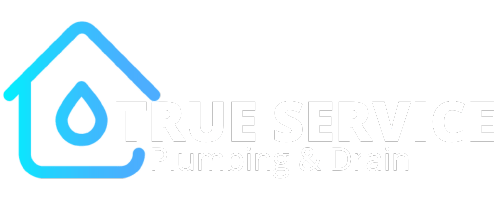When winter sets in, one of the biggest concerns for homeowners is frozen pipes. Ignoring the signs of frozen pipes can lead to severe consequences, including bursts that cause flooding, water damage, and expensive repairs.
In this blog, we’ll cover everything you need to know about recognizing and preventing frozen pipes, and how to act fast if you suspect your plumbing is affected.
What Are the Signs of Frozen Pipes?
Knowing the early signs of frozen pipes can save you from extensive damage.
Here are the key indicators:
Little to No Water Flow
One of the first warning signs of a frozen pipe is reduced water flow or no water at all.
When water inside the pipe freezes, it creates a blockage, restricting the flow.
If you notice only a trickle coming from your faucet, especially on cold days, it’s a good idea to inspect your pipes immediately.
Frost on Exposed Pipes
Visible frost forming on exposed pipes is a clear sign they may be freezing.
This happens most often in uninsulated or poorly insulated areas like your basement, garage, or attic.
Check these areas regularly during cold weather.
Unusual Odors from Drains
If a pipe freezes, it may prevent airflow through your plumbing system.
This can cause strange, often foul odors to come out of drains.
This is another subtle sign that one of your pipes could be blocked by ice.
Bulging or Cracked Pipes
A bulging pipe is a serious sign that the water inside has frozen and is expanding.
This expansion puts pressure on the pipe, which can cause cracks or bursts.
If you see a pipe that looks swollen, it’s time to take action immediately.
Who Is Most at Risk of Frozen Pipes?
Not all homes face the same risk of frozen pipes.
Certain factors increase the likelihood:
Homes in Cold Climates
If you live in an area where temperatures regularly drop below freezing, you’re at higher risk.
Homeowners in regions with harsh winters, such as Toronto and the GTA, are more likely to deal with frozen pipes, particularly in unprotected areas of the home.
Older Homes
Older homes with outdated plumbing systems are often more vulnerable.
Pipes may be located in poorly insulated areas, or the pipes themselves may be made of materials that freeze more easily, such as metal.
Homes with Uninsulated or Exposed Pipes
Pipes that run through unheated spaces, like crawl spaces, attics, or along exterior walls, are the most at risk.
Without proper insulation, these pipes can freeze quickly when temperatures drop.
When Are Frozen Pipes Most Likely to Happen?
Frozen pipes don’t occur randomly.
They are most likely to happen during specific times:
During Cold Snaps
Pipes are most likely to freeze when temperatures dip below freezing, particularly during extended cold spells.
Homes that aren’t well-prepared for sudden cold snaps are especially vulnerable.
Overnight
Pipes are more at risk overnight, as temperatures tend to drop significantly.
If your heating system is turned down or off at night, pipes in colder areas of the house are more susceptible to freezing.
Early Winter
Often, the start of winter catches homeowners off guard before they’ve taken preventative measures.
Once the first major freeze hits, uninsulated pipes can freeze rapidly.
Where in the Home Are Pipes Most Likely to Freeze?
Frozen pipes are more likely in certain parts of your home. Here are the areas you should keep a close eye on:
Unheated Areas
Pipes located in basements, attics, garages, and crawl spaces are prime candidates for freezing because these areas are often not properly heated.
If these spaces are uninsulated, your risk increases significantly.
Near Exterior Walls
Pipes that run along or close to exterior walls are highly vulnerable, especially if those walls are not well insulated.
Cold air seeping through gaps or poorly insulated walls can quickly drop the temperature of the water inside the pipe.
Under Cabinets
Pipes under sinks or within cabinets that are located on exterior walls can freeze easily if the cabinet doors are closed.
Cold air trapped inside these cabinets can lower the temperature around the pipes.
How to Prevent Frozen Pipes
Prevention is the best solution when it comes to frozen pipes.
Here’s how you can protect your home:
Insulate Exposed Pipes
Adding insulation to exposed pipes, especially those in unheated areas, is one of the most effective ways to prevent freezing.
Pipe insulation sleeves are widely available and easy to install.
Allow Faucets to Drip
When temperatures are expected to drop below freezing, let faucets run at a slow drip.
This keeps water moving through the pipes, which helps prevent ice from forming.
Running water doesn’t freeze as easily as still water.
Open Cabinet Doors
In areas like kitchens or bathrooms, open your cabinet doors to allow warm air to circulate around the pipes.
This is especially important during very cold nights when the rest of the home is warm, but the pipes under sinks may be cooler.
Seal Leaks and Drafts
Seal any cracks, holes, or gaps where cold air could enter your home, particularly around exterior walls where pipes are located.
By reducing drafts, you help keep your pipes warm enough to avoid freezing.
Keep the Heat On
Even if you’re going on vacation or leaving the house for an extended period, keep your heat on.
Maintain a temperature of at least 12°C (55°F) inside your home to prevent your pipes from freezing.
Use Heat Tape
For pipes that are especially at risk, consider using heat tape or heat cables.
These electrical devices are designed to wrap around pipes and provide warmth, keeping them above freezing even in very cold weather.
What to Do If Your Pipes Freeze
If you suspect your pipes have frozen, it’s important to act quickly:
Turn Off the Water Supply
The first thing to do is shut off your home’s main water supply to prevent pressure buildup.
This can help reduce the risk of the pipe bursting as the ice begins to thaw.
Thaw the Pipes Slowly
Use a space heater, hairdryer, or warm towels to gently thaw the frozen section of the pipe.
Never use open flames like blowtorches, as this can damage the pipes or cause a fire.
Call a Professional Plumber
If you cannot locate the frozen section or if the pipe has already burst, contact a professional plumber immediately.
They can safely resolve the issue and prevent further damage to your home.
Conclusion: Stay Ahead of the Freeze
Recognizing the signs of frozen pipes early and taking preventative action can save you from significant damage and costly repairs.
Whether it’s insulating pipes, sealing drafts, or knowing how to thaw pipes safely, taking the right steps now can make all the difference when winter arrives.
Prevent Frozen Pipes with True Service Plumbing
When it comes to protecting your home from the dangers of frozen pipes in Toronto and the GTA, True Service Plumbing is your trusted partner.
We offer comprehensive solutions, from pipe insulation to emergency plumbing repairs, ensuring your home stays safe and warm all winter long.
Concerned about frozen pipes? Contact True Service Plumbing today.
Our licensed experts are ready to help you safeguard your home and avoid costly winter plumbing issues.


